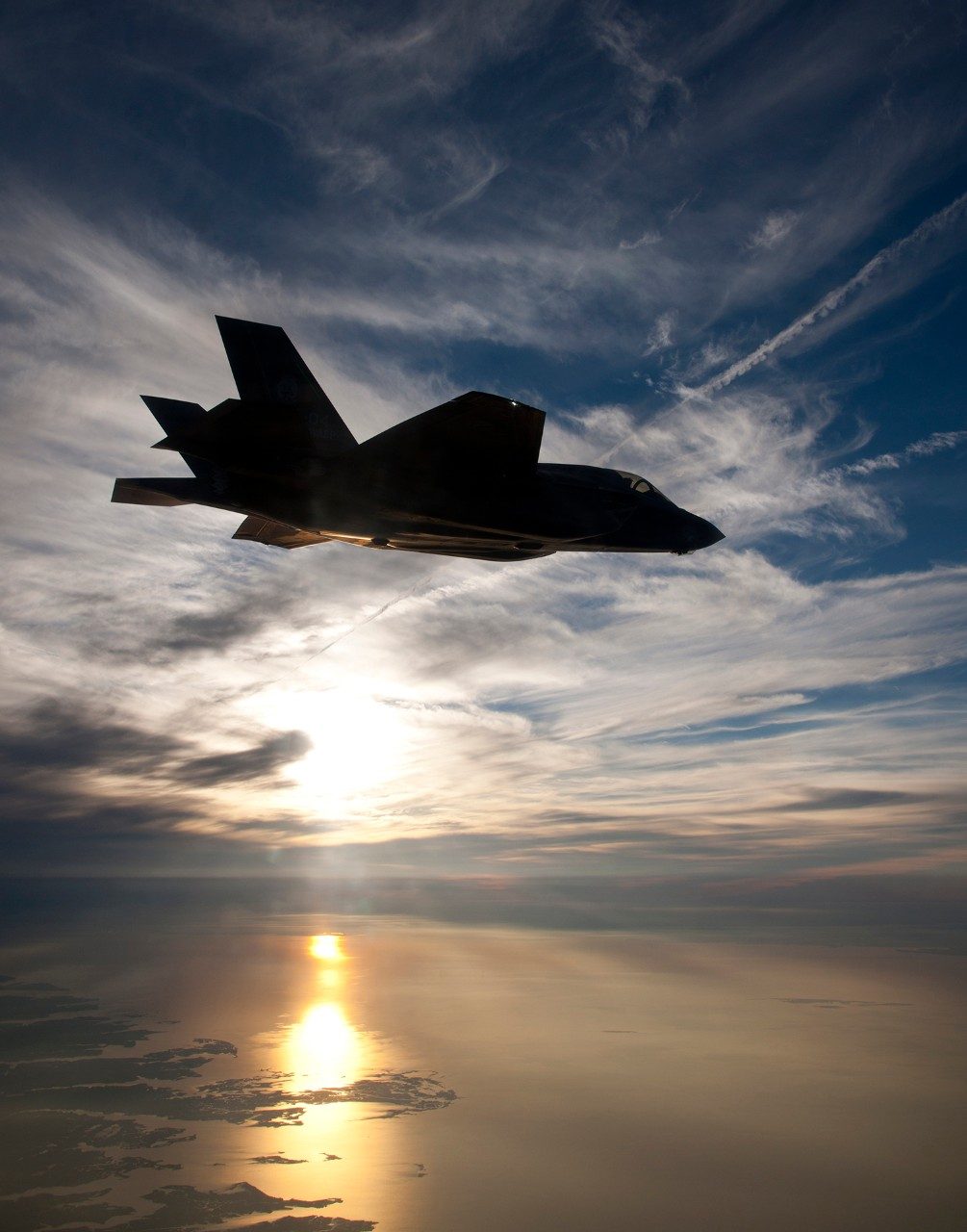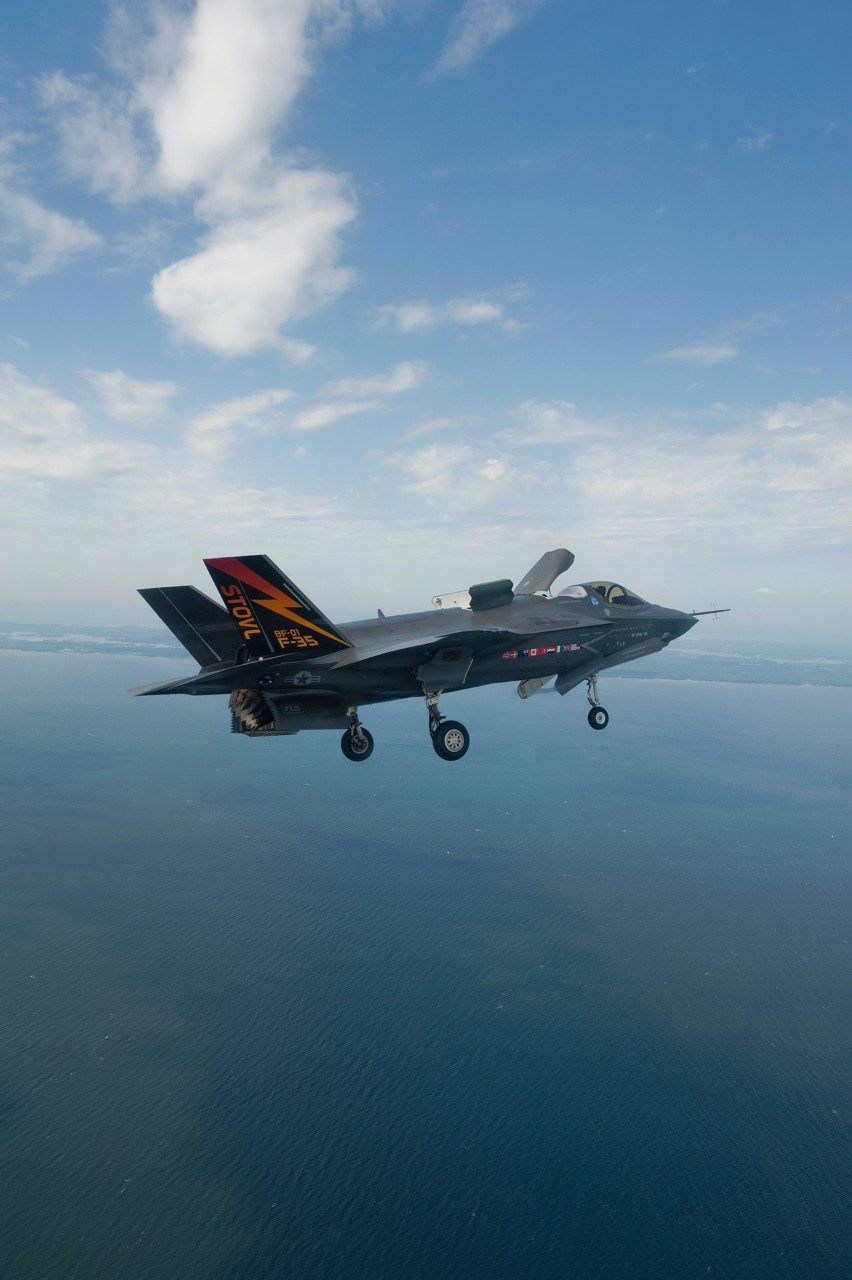On March 18, 2010, U.S. military officials focused their attention on a single F-35 fighter stationed at the remote Naval Air Station in Patuxent River, Maryland, anxious to see if Lockheed Martin’s vaunted fifth-generation fighter could pass the most important flight test in its history.
Designed for the Marine Corps, the F-35B variant would do what no other plane had ever done: accelerate past the speed of sound in flight, then make vertical landings on the smallest of landing footprints, much like a helicopter.

In Maryland, it was test pilot Graham Tomlinson’s job to climb aboard an F-35B and do exactly that: execute the first official vertical landing in the program’s history.
It began without a hitch. After a flawless, short takeoff Tomlinson took his jet out for a 13-minute spin and looped back around toward Patuxent River, carefully positioning the aircraft directly above its intended landing site.
Hovering gracefully, the plane reacted as expected. Tomlinson braced for his descent. The moment of truth had arrived.
Getting Vertical
The quest to create a fighter capable of taking off and landing in confined spaces has been a decades-long pursuit on both sides of the Atlantic. As early as 1954, Lockheed Martin was busy designing experimental “vertical rising” fighters, which soon paved the way for vertical-landing aircraft like the British Harrier.
But unlike the Harrier, the F-35B and its Short Take-Off and Vertical Landing (STOVL) system offers both vertical landing and long-range supersonic speed in one unit, creating a stealthy, lightning-fast fighter capable of carrying advanced weaponry.

Using energy generated by the F-35’s single engine, a swiveling jet pipe capable of rotating 95 degrees in 2.5 seconds redirects the engine thrust downward, while additional lift fans beneath the cockpit and wings combine to produce 40,000 pounds of vertical thrust.
At Patuxent River, all systems were go. Tomlinson quickly mastered the controls, hovering steadily at 150 feet for a full 60 seconds. In vertical landing configuration, the jets roared as Tomlinson carefully guided the F-35B to a gentle touchdown on a 95- square-foot landing pad.
As one test pilot later noted, “You had to be an octopus to fly a Harrier.” In an F-35B, another said, “It’s just like magic.”
A Masterpiece in Progress
Sources and Additional Reading
- Clark, Colin. “F-35B Makes First Vertical Strip Landing At Sea.” AOL Defense.http://defense.aol.com/2011/10/03/f-35b-makes-first-vertical-carrier-landing/, accessed August 22, 2012.
- Joint Strike Fighter Program. “The F-35 Lightning II.” www.jsf.mil, accessed August 22, 2012.
- Lockheed Martin. “F-35 Lightning II.”
- Taylor, Dan. “Course Correction.” Government Executive.http://www.govexec.com/magazine/features/2012/08/course-correction/57393/?oref=mag-module, accessed August 22, 2012.
- Trimble, Steven. “Lockheed Marks First Supersonic Flight by STOVL F-35B.” Flightglobal.http://www.flightglobal.com/news/articles/lockheed-marks-1st-supersonic-flight-by-stovl-f-35b-343263/, accessed August 22, 2012.




